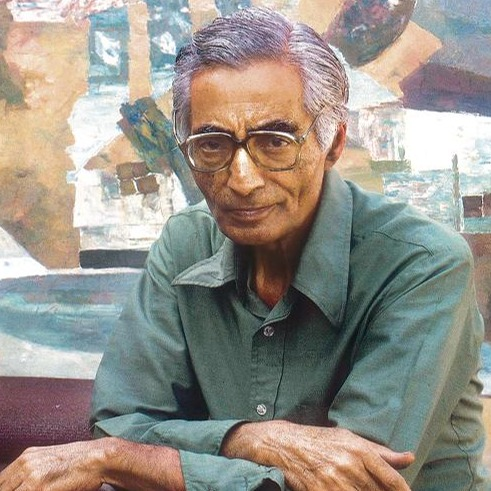
Ram Kumar
Ram Kumar is one of India's prominent modernists who plays a significant role as a first-generation post-colonial Indian artist and was a member of the renowned Progressive Artist's Group alongside F.N. Souza, S.H. Raza, and M.F. Husain.
Ram Kumar's Biography
Ram Kumar was born in Simla in 1924. During the early 1930s, Kumar initially aspired to become a writer rather than an artist. Around 1945, he formally began his artistic journey and started seeking out instruction in the arts. After completing his studies in economics at St. Stephen's College in New Delhi, he went to Paris to study painting under the tutelage of Andre Lhote and Fernand Leger from 1949 to 1952. Before that, he briefly worked as a journalist.
Throughout his lifetime, Ram Kumar received numerous accolades, including the Padma Shri in 1972 and the Prem Chand Puraskar for a collection of his short stories. Noteworthy exhibitions featuring his works include "Split Visions: Abstractions in Modern Indian Painting" at Aicon Gallery, New York, in 2016, as well as retrospectives such as "Masterpieces of Indian Modern Art" at DAG Modern in 2016 and "After Midnight: Indian Modernism to Contemporary India, 1947-1997" at Queens Museum, Queens, in 2015.
Ram Kumar passed away in 2018 at the age of 93, leaving behind a profound artistic legacy.
Ram Kumar's Art Style
Ram Kumar, like many artists of his generation in post-Independence India, found inspiration in European modernist movements while maintaining a distinct focus on Indian subject matter. During his early years as an artist, he developed a profound fascination, even an obsession, with the human face. He found himself captivated by the face's ability to effortlessly and powerfully express the drama and emotions of life. Kumar's canvases from this period were filled with faces that portrayed a sense of sadness, desperation, loneliness, hopelessness, and a feeling of being lost. Although his early paintings were figurative, upon returning to India and experiencing disillusionment due to unmet expectations of Indian independence, his artistic direction shifted away from portraying the human figure.
In 1960, Kumar visited Varanasi, a holy place in Hinduism where death leads to liberation rather than rebirth. This experience influenced Kumar's artistic trajectory, prompting a transition from figuration to abstraction. His practice became characterized by minimalist and abstract compositions inspired by Varanasi and the landscapes of his childhood.
Ram Kumar's work primarily consists of abstract renditions of landscapes featuring jagged topographical contours, complemented by a sense of ambient despair. Exploring diverse interpretations of landscape as a concept, Kumar employs various textures to depict its architectonics through abstract strokes.
Years:
Born in 1924
Country:
India, Shimla